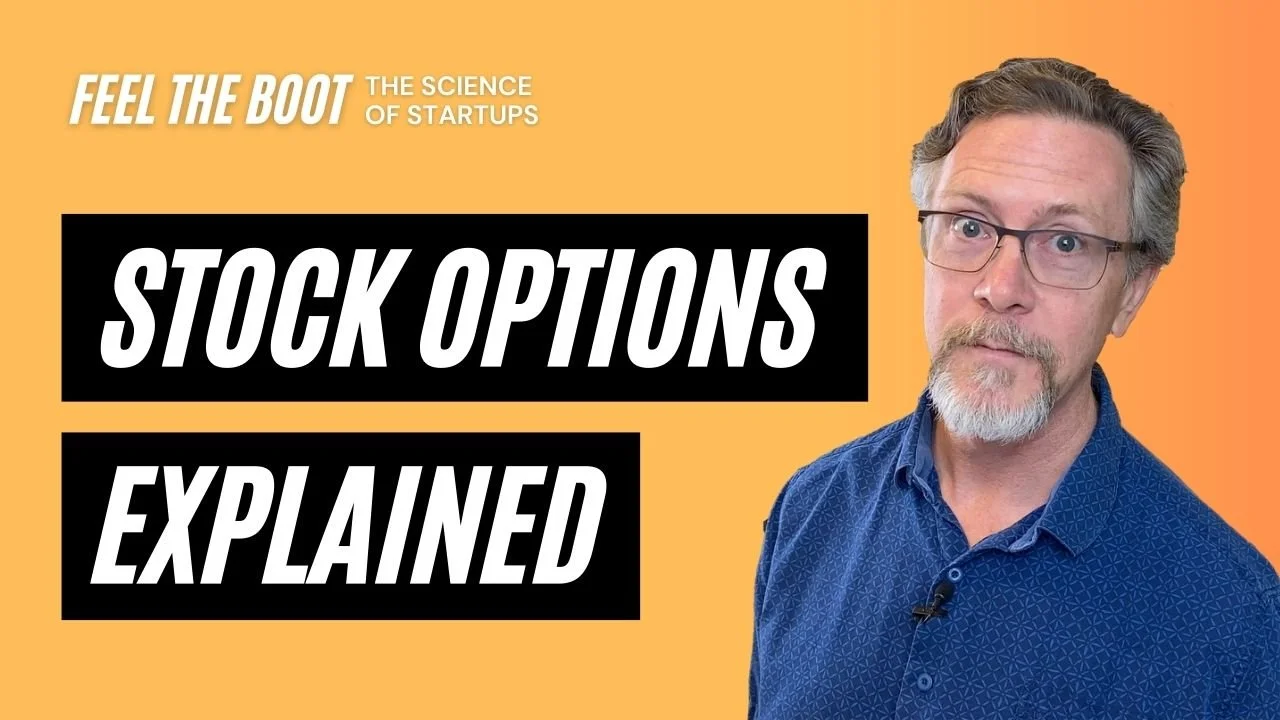9. Understanding stock options from the employee perspective
Watch on YouTube
I have seen few topics generate more confusion than stock options. People with options in fast growing companies like to brag about them but often don’t actually understand them. Employees don’t understand what they are getting, so the option grant is less impactful. Here are the basics of what workers need to know about their stock options.
This article is part of our series on Running your Business. It is a companion piece to How and Why to Leverage Stock Options in Your Startup.
But first a quick disclaimer: This is just general educational information, not tax or financial advice. For individualized advice, talk to a good accountant.
In general, options are a form of derivative, and can be created, bought, and sold independent of the company. However, when most people talk about options, they mean options granted by a company, which is what I will cover here. An option is a right to buy up to some amount of stock, at a particular price, within a period of time. That price is the “strike price”. For example, I might have an option to buy ten thousand shares of stock in my employer at $55 per share, any time before December 31, 2025. An option just gives the employee the opportunity to buy stock at that price, there is no obligation.
For employees, options represent the best chance of getting a massive payout if the company is successful.
When evaluating a grant of options, don’t focus on the number of options. A better perspective is to look at the implied ownership in the company. I have seen people brag that they have some millions of options, while someone else at a different company has only thousands. This is nonsense. What matters is the value of the options and the ownership they represent. After the first few employees, typical grants are small fractions of a percent of the company, with the exception of C-Suite hires.
Most option grants vest over time. This means that while the employee is granted some block of options to purchase stock at a given price, they only get the right to do so over time. Typically, for the first year after a grant, employees have no right to exercise the option at all. In the most common vesting schedule, they then gain (or vest) the right to exercise a quarter of the options, with more vesting each month until they can all be exercised after four years.
Vesting can benefit the employee because options are almost always granted at “Fair Market Value”, that is at the current stock price. A company could grant options to an employee each year, always at the new higher strike price, but a better deal for the employee would be to get a larger initial grant at the then current price, which would vest each year while maintaining that same strike price.
To understand why, we need to dig into valuing options. If the company’s stock is publicly traded, then the value of an option exercised today is the difference between the current stock price and the strike price of the option. If you will be holding the option for a length of time, the value will be higher because there is a chance of the underlying stock significantly appreciating in value.
Suppose I was granted 1,000 options in Acme company with a strike price of $10 per share.
Now, a few years later, the company is trading for $25 per share. If I chose to exercise my options, I would spend $10,000 to buy 1,000 shares worth $25,000. So, my options are worth $15,000, the difference between the amount I would spend and the amount I would get. Options never have a negative value. If, for some unfortunate reason, the current price is less than the strike price, then they are simply worthless.
When exercising options, the holder is acting on their right to purchase up to the agreed upon number of shares at that specific price. Technically, that means that the holder needs to be able to pay the full strike price of all the shares they are buying. Many times, companies will allow employees to do something called a “cashless exercise” where the company calculates simply issues a number of shares of equal worth to the options (as calculated above) and cancels the options with nothing out of pocket for the option holder.
By law, options are of limited duration. They all expire at some point, and if they expire without being exercised they are worthless. This can create a complex decision point for employees as to whether to exercise their options before that happens.
Option holders owe taxes on the value of their options when they are exercised. After exercise, if the shares of the company are not public, and they are not willing to buy shares back, then employee is stuck holding on to those shares, potentially for a long time. This can cause problems if the tax bill is significant, but the holder is only rich in shares they can’t sell. This is when good accountants and tax advisors are so valuable.
In the next blog, I will look at options from the entrepreneur’s perspective.
May your options be always “in the money”!
Till next time … Ciao!
Next, I encourage you to look at this article on the best ways to leverage stock options in your startup.





